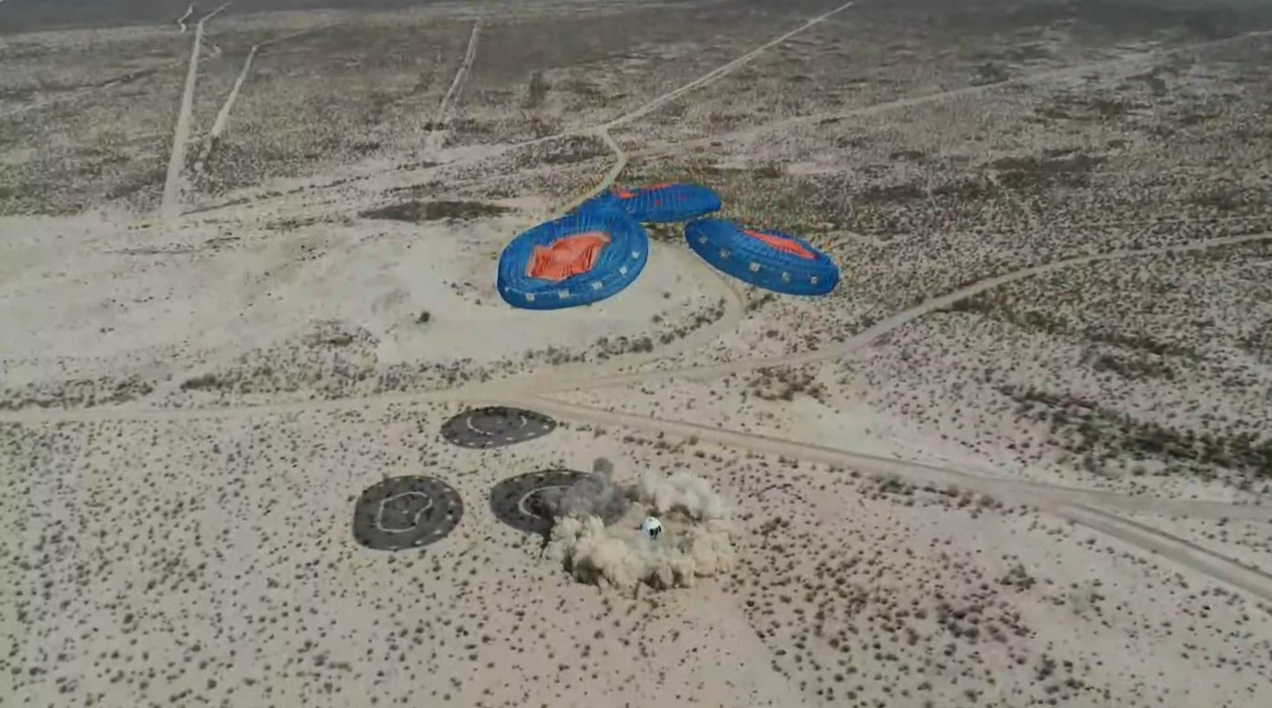Blue Origin aces 'astronaut rehearsal' New Shepard test flight
New Shepard's 15th flight is in the books.
Blue Origin has another clean test flight under its belt.
The company launched the 15th uncrewed test flight of its reusable suborbital vehicle New Shepard today (April 14), blasting off from a West Texas launchpad at 12:50 p.m. EDT (1650 GMT; 11:50 a.m. local time). Originally targeting launch at 11:15 a.m. EDT (1515 GMT; 10:15 a.m. local time), the flight was delayed about an hour and a half for final checks.
The mission, dubbed NS-15, was meant to mimic what will occur once Blue Origin starts flying passengers. Before the flight, two company employees entered the capsule to practice the procedures that future astronauts will follow before launch; the faux-astronauts left the vehicle for the flight proper, then returned to the capsule to practice post-landing procedures.
Today's mission "is really a critical step in our march towards first human flight," Ariane Cornell, Blue Origin's director of astronaut and orbital sales, said during the company's launch webcast.
Video: Watch Blue Origin's New Shepard NS-15 flight launch (and land)!


During that webcast, Cornell and fellow launch commentator Patrick Zeitouni gave a virtual tour of the West Texas facility, which the company has named Launch Site One. The pad has astronaut quarters named after NASA's pioneering Mercury 7 spaceflyers and a lounge/gym called the Karman Line, the traditionally recognized boundary of outer space that lies 62 miles (100 kilometers) above Earth's surface.
Today's mission involved Blue Origin's first upgraded New Shepard vehicle, known as NS-4 or RSS First Step, which first flew in January. (RSS stands for Reusable Space Ship.) The upgrades made this particular capsule the first to boast features like temperature and acoustic control, display panels and a push-to-talk communication system.
Breaking space news, the latest updates on rocket launches, skywatching events and more!
Both the New Shepard capsule and its rocket are reusable, and both landed smoothly within about 10 minutes of launch. During the flight, the capsule reached a peak altitude of 347,574 feet (105,941 meters) above ground level, according to a later statement released by Blue Origin.
In addition to testing astronaut procedures, today's flight carried Blue Origin's usual payloads: an instrument-laden dummy known as Mannequin Skywalker and more than 25,000 postcards submitted by students to the company's Club for the Future.
Zeitouni and Cornell announced during today's webcast that Blue Origin will donate Mannequin Skywalker, along with a New Shepard seat, to the U.S. Space and Rocket Center in Huntsville, Alabama, a museum that also hosts Space Camp.
"With Mannequin and the seat, I think we can tell a great story about that path to [human] flight," Zeitouni said.
Editor's note: This story was updated to correct a peak altitude listed during the live broadcast. Email Meghan Bartels at mbartels@space.com or follow her on Twitter @meghanbartels. Follow us on Twitter @Spacedotcom and on Facebook.

Meghan is a senior writer at Space.com and has more than five years' experience as a science journalist based in New York City. She joined Space.com in July 2018, with previous writing published in outlets including Newsweek and Audubon. Meghan earned an MA in science journalism from New York University and a BA in classics from Georgetown University, and in her free time she enjoys reading and visiting museums. Follow her on Twitter at @meghanbartels.


